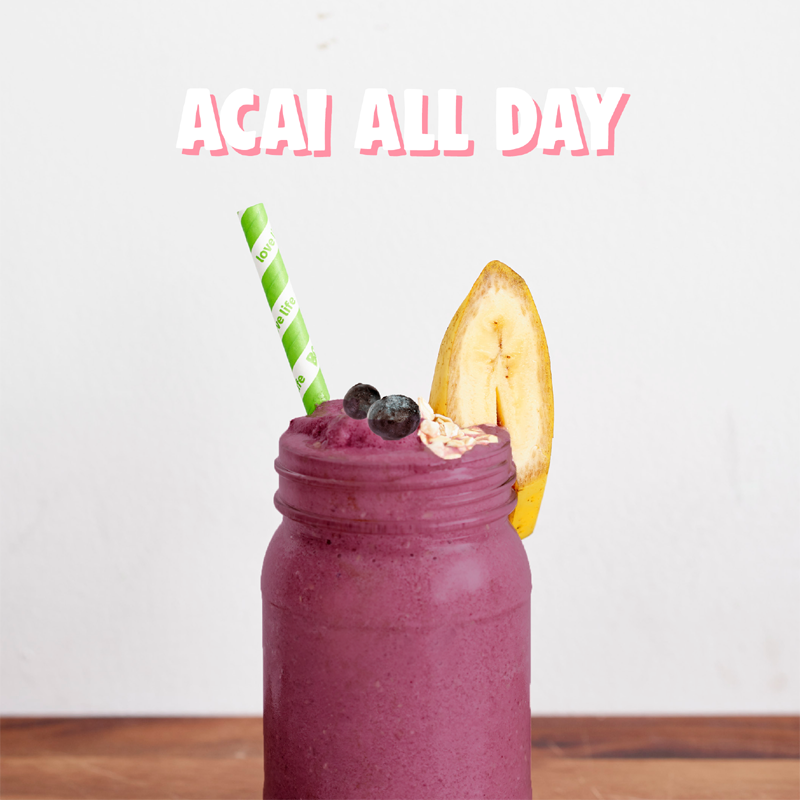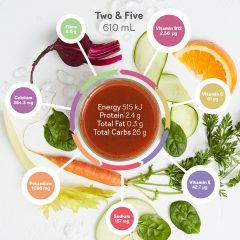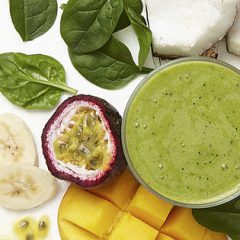Superfoods

Alright, so everybody generally knows these foods are ‘good for us’ – full of vitamins and minerals and such – but let’s dive a little deeper! Here are some fun facts about our favourite ‘Superfood’ ingredients:
Kale: Professionally, I’m sure we all want our careers to flourish like 2012 kale. Unconfirmed rumours say that kale went from being a Pizza Hut table garnish to the King of Greens faster than a lizard drinking. This rise was well earned. Kale is packed full of vitamin C, E and A – important vitamins for an abundance of bodily functions.
Turns out your parents were right all along – it’s good to eat your greens.
Blueberries: These little blue blobs contain an abundance of both Vitamin C and Vitamin K Studies have been shown to directly increase cellular antioxidant levels in your body – talk about your everyday hero!
Acai: Like a superhero reining from the Amazon rainforest, Acai berries are native to Brazil and have some pretty powerful antioxidants, which also give Acai it’s deep purple colour.
Now we’ve talked a lot about antioxidants – but what’s the big deal? Antioxidants are important because they neutralize the damaging effects of free radicals throughout the body. Free radicals are like little renegades and come about from both normal cell metabolisms or from external sources such as radiation, cigarette smoke, pollution, etc. When the body is accumulating more free radicals than it is destroying, their accumulation can lead to something called oxidative stress; which can be a key player in the development of chronic illnesses. Antioxidants are both naturally made in the body and externally supplied through food and/or supplements.
*Cue Boost’s antioxidant-packed smoothies!*
So there you have it! Fruit is your friend. We have attached our references below if you’re interested in some further reading.
References:
Emebu, P. & Anyika, J. (2011). Vitamin & Antinutrient Composition of Kale (Brassica Oleracea) Grown in Delta State, Nigeria. Pakistan Journal of Nutrition 10(1). 76-79. ISSN: 1680-5194.
Florence TM. The role of free radicals in disease. Aust N Z J Ophthalmol. 1995
Feb;23(1):3-7. Review. PubMed PMID: 7619452.
Sherwood, B. (2011). Kale. USU Student Organic Farm Newsletter (8). Retrieved from: https://digitalcommons.usu.edu/student_orgfarm/8
Chen, C., Li, Y., Xu Z. (2010). Chemical principles and bioactivities of blueberries. Yao Xue Xue Bao 45(4):422-9. Institute of Pharmacology, National Yang-Ming University, Taipei, China. PMID: 21355205. Retrieved from: https://www.ncbi.nlm.nih.gov/pubmed/21355205
Pham-Huy, L. A., He, H., & Pham-Huy, C. (2008). Free radicals, antioxidants in disease and health. International journal of biomedical science : IJBS, 4(2), 89–96. Retrieved from: https://www.ncbi.nlm.nih.gov/pmc/articles/PMC3614697/
Wolfe KL, Kang X, He X, Dong M, Zhang Q, Liu RH. Cellular antioxidant activity
of common fruits. J Agric Food Chem. 2008 Sep 24;56(18):8418-26. doi:
10.1021/jf801381y. Epub 2008 Aug 30. PubMed PMID: 18759450.
https://www.ncbi.nlm.nih.gov/pubmed/18759450
Yamaguchi KK, Pereira LF, Lamarão CV, Lima ES, da Veiga-Junior VF. Amazon
acai: chemistry and biological activities: a review. Food Chem. 2015 Jul
15;179:137-51. doi: 10.1016/j.foodchem.2015.01.055. Epub 2015 Feb 4. Review.
PubMed PMID: 25722148. https://www.ncbi.nlm.nih.gov/pubmed/25722148







